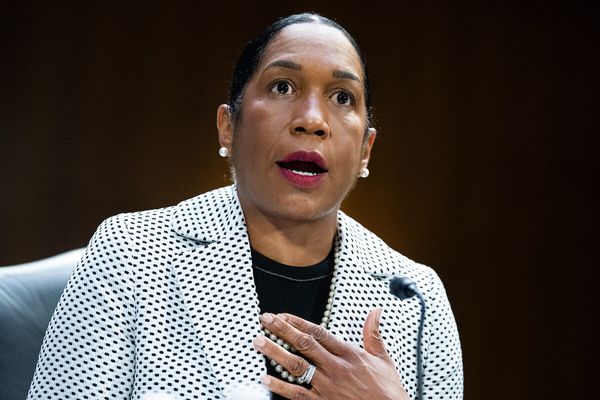
The Federal Reserve kept its thumb squarely on the pause button at this week’s meeting. That’s good news for your bank accounts, since another rate cut would probably mean a lower return on your money.
At the meeting, held January 28-29, the Fed left interest rates unchanged at 4.25%-4.50%. The central bank has been on pause since September 2024, when it delivered the last of three rate cuts designed to keep the U.S. economy humming as inflation cooled.
“We're focusing on seeing real progress on inflation, or labor market weakness before we consider making adjustments,” said Jerome Powell, chair of the Federal Reserve, at his post-meeting press conference.
Most people might find the monetary pronouncements of the Federal Reserve and Chair Powell somewhat opaque, and possibly far removed from their everyday conconcerns. But when it comes to the annual percentage yield (APY) you earn on your bank balances, that’s not entirely true.
Act quickly to secure strong earnings on savings products
When the Fed adjusts its key interest rate policy, the fed funds rate, consumers feel the impact in a variety of ways. Banks tend to lower the APYs they offer on bank accounts when the central bank cuts rates and raise yields when it increases rates.
Savings accounts
According to the FDIC, the average savings account yields 0.41%—down from 0.46% last summer. That’s pretty terrible, but the average is weighed down by the majority of accounts that offer little to no return on your deposits. You can get a much better rate by shopping around for a high-yield savings account.
Below, you can see how the Fed rate cuts in 2024 led many institutions to lower their rates on savings accounts. These levels are likely to stay fairly steady until we see further interest rate changes, but there are no guarantees on how long the rates will last. Savings account rates can change any time, at the discretion of the bank.
View this interactive chart on Fortune.com
Checking accounts
Reality check: Considering how low most rates are, any interest you might earn on a checking account is icing on the cake and not the sole focus. Fed policy changes have a negligible impact on checking accounts but considering how low the APYs are already, it’s not a significant concern.
Certificates of deposit
This type of deposit account is probably where we’ve seen the most impact so far. Top rates on certificates of deposit dropped from nearly 6% in the summer of 2024, to below 5% in January 2025. Those rates will likely continue to come down as the Fed rates drop back to normal levels.
The best thing about a CD, though, is that you’re locked into that interest rate for the full length of the term. That means if you get a 4.50% CD now that lasts two years, you’re guaranteed that rate of return for the whole two years regardless of what happens to the reserve rate in the meantime.
View this interactive chart on Fortune.com
Money market accounts
These types of deposit accounts function similarly to checking accounts, with much higher yields but lower rates than HYSAs. They’re good for stashing large amounts of cash you don’t use often but would want to access quickly in the case of an emergency. Much like savings accounts, you’ll almost certainly see an impact on these rates that correlates with shifts in the market.
If you want to put some money away without worrying about falling rates, University of Central Florida economist Sean Snaith points out that government bonds may be a lucrative alternative. “In terms of safety and security, U.S. Treasury bills and bonds are going to offer you safety, and you don’t have to worry about defaulting,” he said. “But make sure to shop around at different financial institutions, banks, or credit unions for your best options.”
How will the Fed rate impact mortgages, loans, and credit cards?
“Changes in the federal funds rate can influence other interest rates throughout the economy,” says Snaith. “Whether it’s mortgages, auto loans, credit card rates, or the rate you can get on a certificate of deposit at a bank. There are many investments that are impacted by what the level of interest rates are in the economy.”
He explains that changes to the federal funds rate can have an impact on what’s known as the “prime lending rate.” Many credit cards are tied to that rate, although the issuer has some flexibility on the final figure. Likewise, mortgage rates are heavily influenced by inflation rates and banks are watching the Fed closely to best determine what they can offer borrowers.
While the future can never be known for certain, Snaith thinks it’s unlikely we will ever see 3% mortgage rates again. “Is there something at the federal level that could happen? Possibly. In the best of all worlds scenario, we make progress on inflation this year in a significant way, the federal government makes some significant moves to reduce the deficit, and that may help bring these longer terms down.”
What can we expect to happen with inflation in 2025?
The latest Consumer Price Index (CPI) report showed inflation rising to 2.9% in December 2024, up from 2.7% in November and a full half-point above the most recent low of 2.4% in September. Still, experts say there’s no cause for alarm.
“Core inflation isn’t accelerating and that’s the story. The market may have had its hair on fire about inflation running away again, but the data do not support that conclusion. What we are seeing is the typical ebb and flow of the data as inflation is being pushed out of the system,” says Jamie Cox, Managing Partner for Harris Financial Group.
As Cox suggested, this small uptick in recent months doesn’t necessarily mean inflation is going to start ramping up again. Chris Zaccarelli, Chief Investment Officer for Northlight Asset Management, points out that at the core, we are seeing a month-over-month (0.2% vs 0.3%) and year-over-year (3.2% vs 3.3%) reduction in inflation.
“We believe the market will be encouraged by the decrease in core inflation, which should alleviate some of the pressure on stock and bond markets,” says Zaccarelli. “As long as the economy continues to grow, the labor market remains stable and companies are able to keep growing profits, we would be buying any dips.”
The takeaway
While inflation has cooled, we’re probably not going to see any significant changes to the Fed rate for a while.
“So far, there has been little, if any, impact [from the new Presidential administration]. It will take time to see how everything plays out in Washington and how the new policies impact inflation and the economy,” says Melissa Cohn, the Regional Vice President of William Raveis Mortgage.
In the meantime, consumers should take a close look at their savings strategies and lock in high interest rates on products such as CDs—while they still can.







